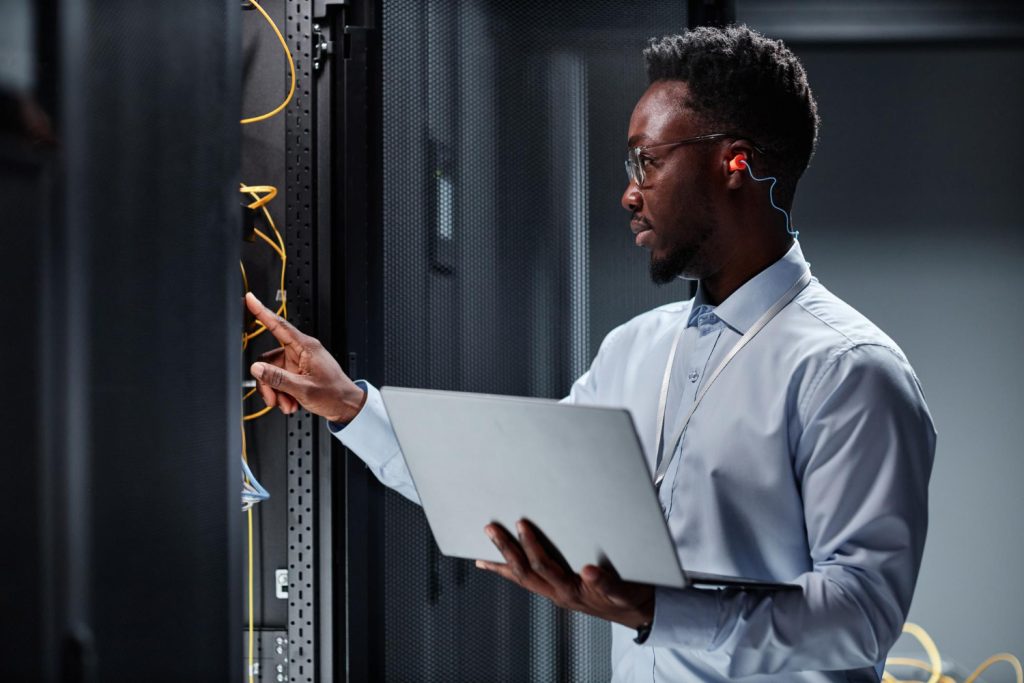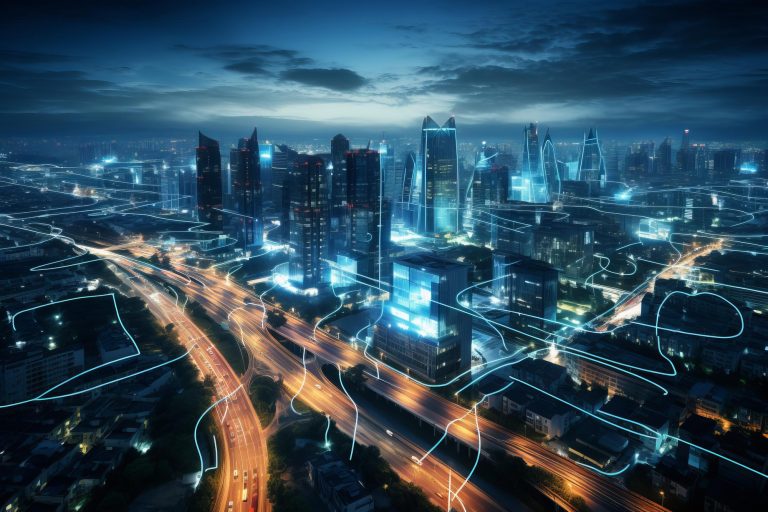Bridging the Digital Divide
The Role of Technology and Infrastructure in South Africa’s Growth

South Africa, a nation rich in potential, faces a significant challenge in the 21st century: the digital divide. This gap separates those with access to information and communication technologies (ICT) from those without. Bridging this divide is crucial for inclusive economic growth, social development, and overall national prosperity.
At OE Hub, we understand the transformative power of technology. Our commitment to innovation extends beyond data centers and infrastructure – it’s about empowering people and communities. This article delves into the importance of digital infrastructure in South Africa and how the U2S Data Center & Warehouse project contributes to narrowing the digital divide.
A Hurdle to Progress
The digital divide manifests in various forms in South Africa. Limited access to affordable internet connectivity, a lack of digital devices like computers and smartphones, and insufficient digital literacy skills all contribute to the problem. These limitations exclude a significant portion of the population from accessing essential services, educational opportunities, and participation in the digital economy.
Here’s a closer look at the impact of the digital divide:
- Education:
Without access to online resources and learning platforms, students, particularly those in rural areas, fall behind their connected counterparts. - Healthcare:
Telemedicine offers immense potential for remote consultations and improved access to healthcare information. However, the digital divide hinders its reach. - Economic Growth:
Limited digital literacy and internet access restrict entrepreneurship, hinder job creation, and make it difficult for businesses to compete in the global marketplace. - Social Development:
The digital divide restricts access to government services, online learning platforms, and social connections, hindering social mobility and inclusion.
The Power of Infrastructure: Building a Bridge to the Future

Fortunately, there’s a path forward. Investing in robust and accessible digital infrastructure is the first step towards bridging the digital divide. This includes:
- Expanding Broadband Access:
Fiber optic networks and wireless technologies can bring affordable and reliable internet connectivity to underserved areas. - Data Center Development:
Building data centers creates a foundation for storing and processing vast amounts of data, which is crucial for cloud services and online applications. - Public Wi-Fi Initiatives:
Free or subsidized Wi-Fi hotspots in public spaces provide vital access points for those who cannot afford individual internet connections.
The U2S Project: A Catalyst for Change

The U2S Data Center & Warehouse project Developed and Managed by Sungrey for UP2SPEED (U2S (Pty) Ltd, embodies our commitment to bridging the digital divide. This state-of-the-art facility offers a range of benefits that contribute directly to narrowing the gap:
- Enhanced Connectivity:
The data center acts as a central hub for internet traffic, facilitating improved connectivity and faster speeds across the region. - Cloud Services Platform:
The U2S project provides a platform for cloud service providers, making these services more accessible and affordable for businesses and individuals. - Data Storage and Security:
By offering secure data storage solutions, the project creates an environment where businesses and organizations can leverage digital technologies with confidence.
Beyond Infrastructure: A Multi-faceted Approach

While infrastructure development is critical, a multi-faceted approach is necessary to bridge the digital divide effectively. This includes:
- Digital Literacy Programs:
Equipping individuals with the skills to use technology effectively is crucial. Initiatives that provide basic computer skills training and digital literacy programs are essential. - Affordable Devices:
Reducing the cost of devices like smartphones and computers increases accessibility and empowers individuals to participate in the digital world. - Government Policy:
Government policies that promote open access, incentivize infrastructure development, and address affordability issues can significantly impact progress.
A Shared Responsibility for a Connected Future
Bridging the digital divide is a shared responsibility. It requires collaboration between governments, private companies like OE Hub, educational institutions, and civil society organizations. By working together, we can create a South Africa where everyone has the opportunity to thrive in the digital age.
The U2S Data Center & Warehouse project is a testament to OE Hub’s dedication to this shared vision. We believe that technology is a powerful tool for progress, and we are committed to using our expertise to build a more inclusive and prosperous future for all South Africans.
Join the Conversation
The digital divide is a complex challenge, but it is not insurmountable. We invite you to join the conversation. Share your thoughts and ideas on how we can bridge the digital divide in South Africa. Leave a comment below, or connect with us on social media. Let’s work together to build a future where technology empowers everyone.



